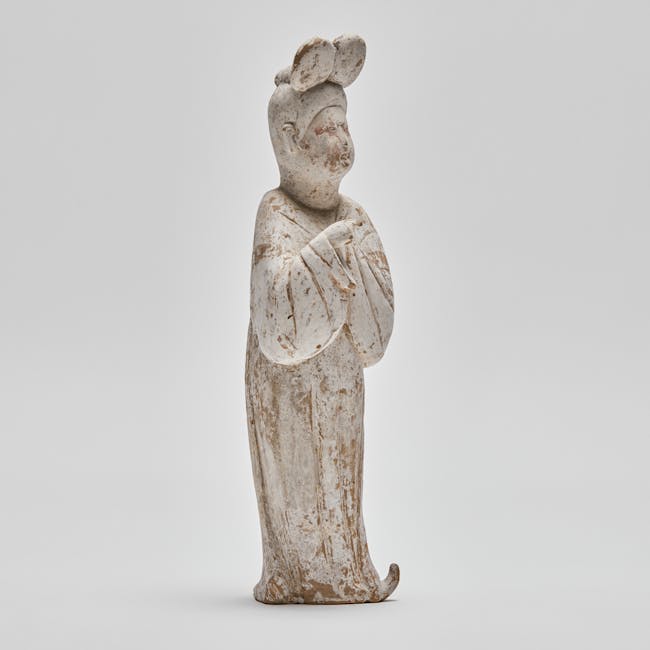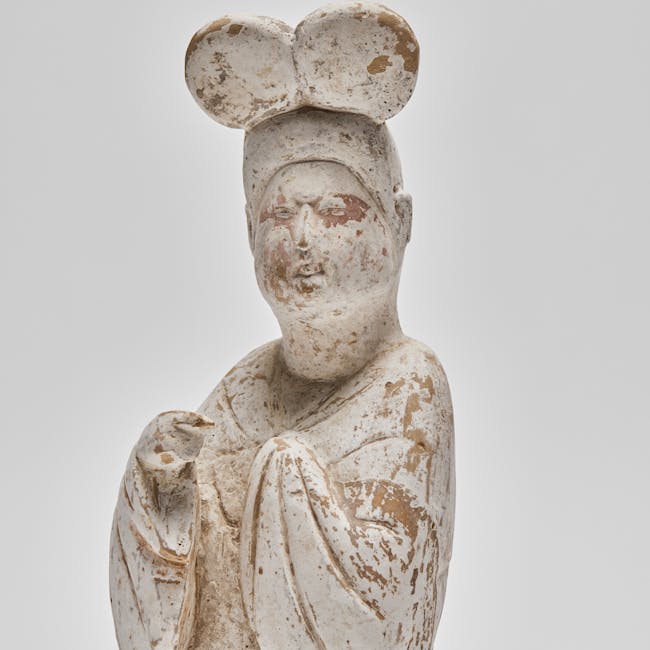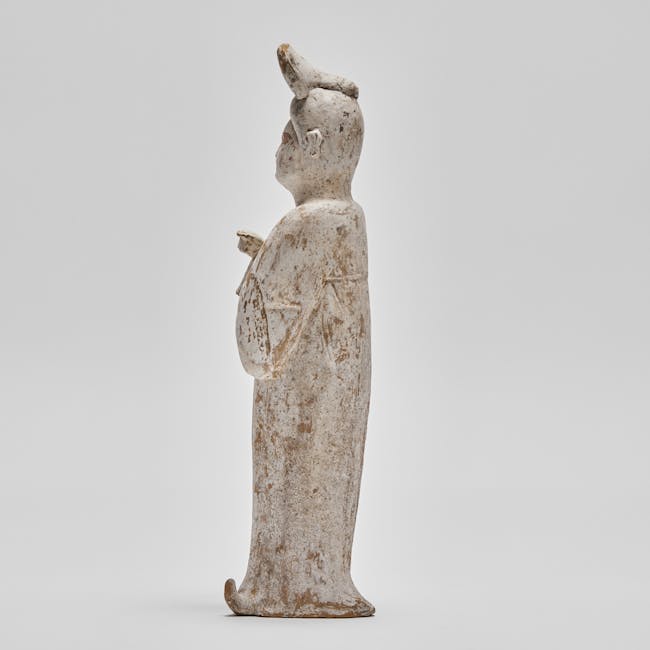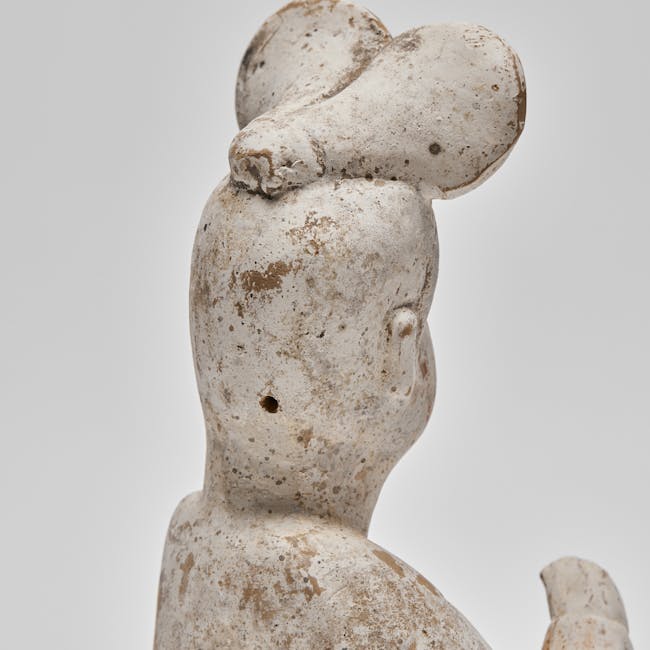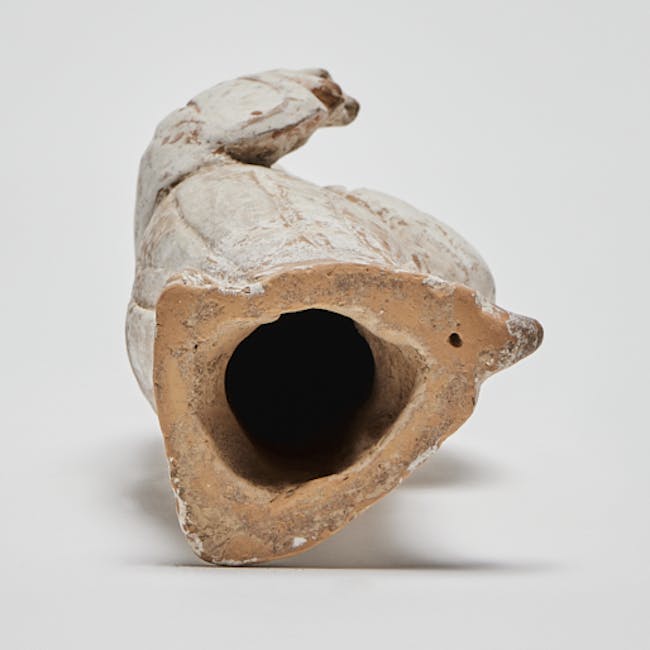This elegant full-bodied court lady, is typical of mid-Tang female figures. She wears a loose and flowing robe tied under the bust, the hem reaching the floor but just revealing the tips of her shoes. The voluminous sleeves fall down in front of her body and covers her left hand; a clenched right hand peeks out from her right sleeve. Her hair is styled extravagantly in an elaborate chignon with a double-barrelled topknot (quixing ji). The figure is hollow, the outside smoothly moulded and cleverly incised to suggest the folds of the garment. After firing, the pottery figure would have been covered in slip and painted with colourful facial features and dress detailing.
Tang ladies were greatly pre-occupied with their beauty routines – particularly their hair and make-up. As Chinese believed that part of the life force of humans was contained in their hair, they let it grow very long. This allowed for an impressive variety of exotic hairstyles, with over a hundred different kinds recorded. These extravagant coiffures were held in place with hairpins and combs, sometimes padded with horsehair for added volume. The women also used flamboyant cosmetics – blush, lip rouge (ynazhi) and an array of boldly shaped eyebrows – each style given a name. Colourful flower-shaped ornaments (huadian) would be pasted to the foreheads and on cheeks to complete the look.
The fashion for plumpness, is often reflected in pottery figures and tomb frescoes dating from the 8th century, which is why these figure are sometimes referred to as ´fat ladies’. This preference for the fuller figure is said to have been influenced by Emperor Xuanzong’s (r.713-756) beloved plump concubine Yang Guifei. But it is more likely that this notable weight increase among wealthy society, came from their more sedentary and luxurious lifestyle. There was a great assortment of imported luxury goods traded in the bustling Tang capital city of Xi’an. Written records note the great variety of delicacies from the neighbouring countries such golden peaches from Samarkand, Persian pistachios, pine nuts and ginseng roots from Korea and mangoes imported from Southeast Asia.
A court lady with a very similar hairstyle is in the collection of Musée Guimet, Paris (MA6106). A larger figure is in the Victoria & Albert Museum, London (CIRC.124-1938). Comparable figures were also found in the tomb of Prince Li Xian in Sanhecun, Shanxi Province.
